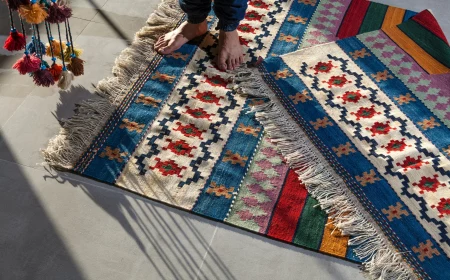The Set Designer’s Playbook: Building Worlds from Scratch
I can still smell the workshop from my very first professional gig. It was this perfect mix of fresh-cut pine, sawdust, and that sharp, distinct scent of scenic paint. We were building a massive, two-story Victorian house for a regional theater show, and the director wanted it to feel solid, real… almost suffocating. My job, as the newbie apprentice, was to help the lead painter make all the new wood trim look ancient. For days, I learned how to layer paint, spatter it with a watered-down brown, and then wipe most of it away to simulate years of grime and life.
In this article
By the way, that’s a classic scenic trick you can try yourself. Just base-coat a piece of wood, thin out some black or brown acrylic paint with water to create a ‘wash,’ brush it on, and then immediately wipe most of it off with a rag. Boom. Instant history.
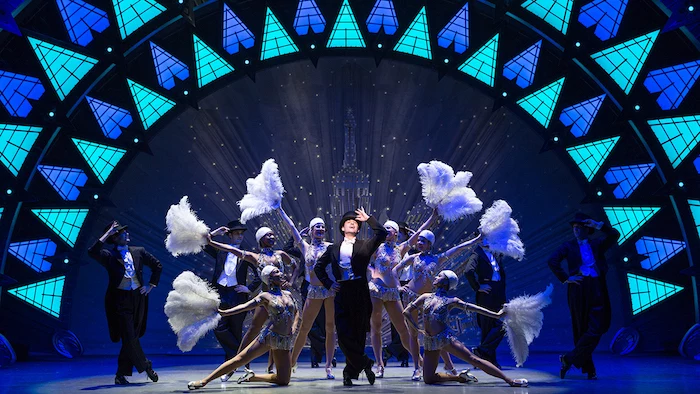
That experience taught me the single most important lesson in this field: set design isn’t just about making things look pretty. It’s about building a physical world that has its own story, a world that breathes right alongside the actors.
Over the years, I’ve designed and built sets for everything from big-stage theatre to indie films and live events. I’ve worked in giant, well-funded workshops and in tiny, shoestring-budget black box theaters. This isn’t about the glamour of opening night. This is about the real work—the nitty-gritty of materials, physics, and creative problem-solving that goes into creating the worlds you see on stage.
It Always, Always Starts with the Script
Before a single sketch is made, the first job is to read the script. And as a designer, you learn to read it in a totally different way than anyone else. I have a three-pass system that has never failed me.
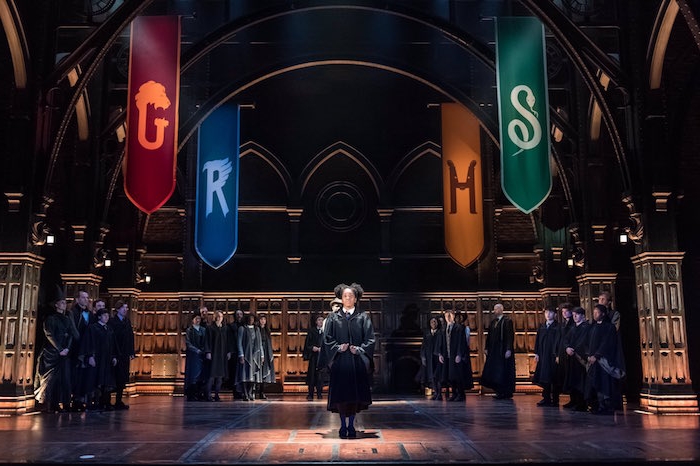
First, I read it just for the story. I let myself get completely lost in the plot and characters. What’s the mood here? Is it a lighthearted comedy, a tense thriller, a heartbreaking tragedy? The emotional vibe of the story is what dictates the entire visual language of the set.
The second read is all business. I go through with a highlighter and mark every single physical action or requirement. A door needs to be slammed shut. A character has to hide behind a curtain. Someone tumbles down a flight of stairs. These are the non-negotiable, practical problems the set must solve. A gorgeous design is totally useless if the actors can’t perform the actions the story demands.
My third and final read is for the subtext. What is this world saying about the people who inhabit it? A cluttered, dusty apartment tells a very different story from a sterile, minimalist loft. I’m hunting for clues about the characters’ financial status, their state of mind, their history. The set is its own character, and this is where I figure out its personality.
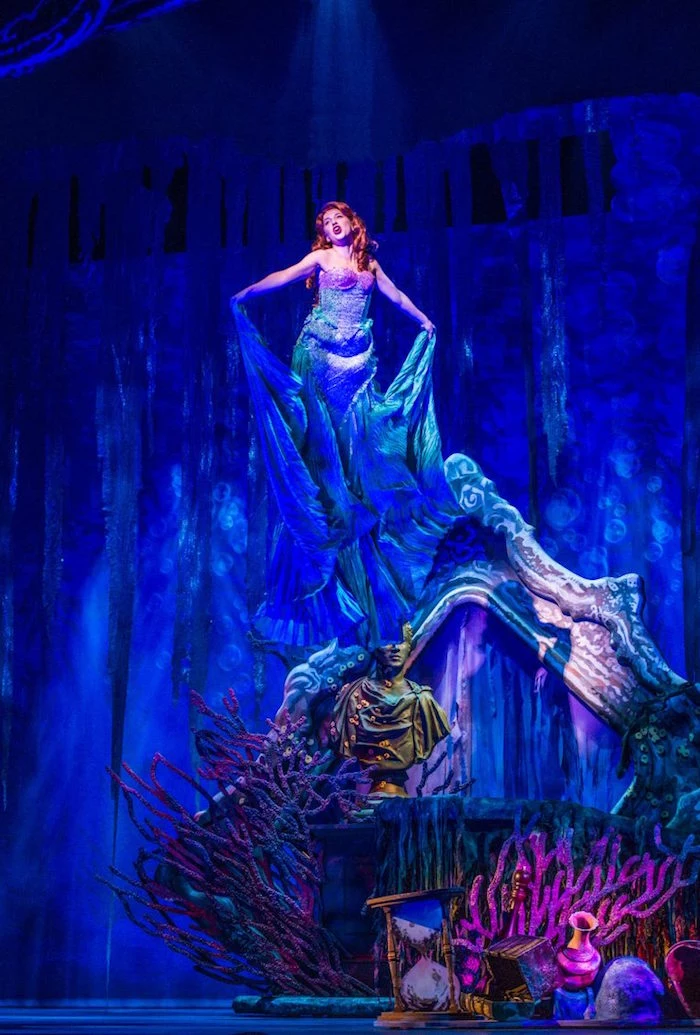
The Vision vs. Reality Meeting
After I’ve broken down the script, it’s time to meet with the director. This is probably the most important conversation of the entire process. They bring their vision, and my job is to listen, ask the right questions, and then figure out how to translate their abstract ideas into a physical space.
Sometimes a director has a crystal-clear image. Other times, they just have a feeling, a color palette, or even a piece of music as inspiration. I once worked on a show where the director said he wanted the set to feel like ‘a fading memory.’ You can’t just build that, can you? So we talked for hours, looking at photography and paintings. We eventually landed on using scrim—a special theatrical gauze that looks solid when lit from the front but becomes transparent when you light something behind it. We built fragmented walls and furniture behind layers of this scrim. By carefully controlling the lights, we could make parts of the set literally appear and disappear, just like a memory.
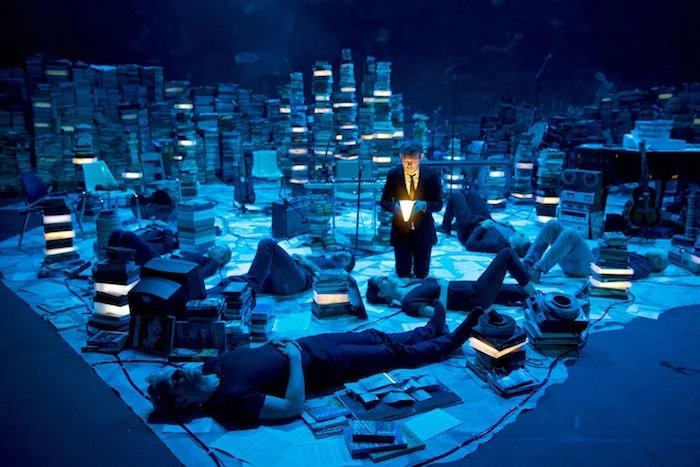
This meeting is also where we get real about the constraints. We have to talk budget, the physical size of the stage, and the crew’s capabilities. A grand vision is fantastic, but it has to be achievable. A typical community theatre might be working with a tiny budget, maybe $500 to $1,500, while a professional regional production could have a set budget anywhere from $15,000 to $50,000 or more. Being brutally honest about these numbers from day one prevents so many headaches later on.
The Nuts and Bolts of Creating an Illusion
Set design is a strange and wonderful blend of art and engineering. You’re crafting an illusion, sure, but that illusion has to be held up by real-world physics and solid materials. Knowing your stuff here is what separates the pros from the amateurs.
It’s All About the Sightlines
A sightline is simply the view from an audience member’s eyes to the stage. In a traditional theater, you have to worry about the person in the fancy front-row center seat and the person in the very last row tucked away in the corner. Can they both see the crucial action? Is a wall blocking their view? We map all of this out using ground plans and elevation drawings.
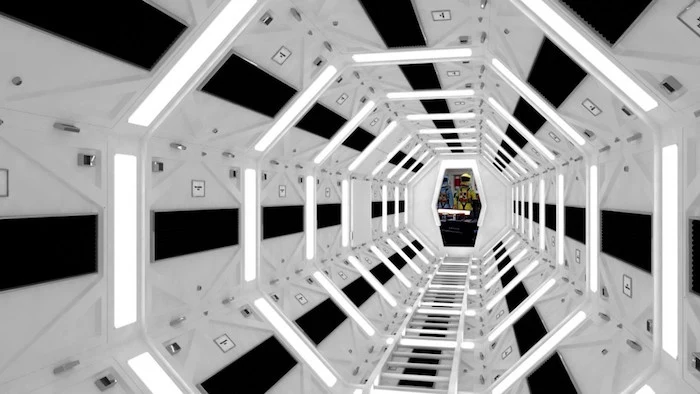
These days, computer-aided design (CAD) programs like Vectorworks or AutoCAD are industry standard. They let us build a 3D model of the whole theater and the set, so we can place a virtual ‘camera’ in any seat to check the view. It’s a lifesaver. But here’s a pro-tip that technology can’t replace: When you’re in the actual space, don’t just sit in the ‘best’ seat. Go sit in the absolute worst seats in the house—top corner, far side, front row with a weird angle. If the show works from there, it’ll work from anywhere.
A Quick Guide to Workshop Materials
The materials you choose impact everything: the look, the weight, the cost, and most importantly, the safety of the set. You quickly learn what to use and when.
Wood & Plywood: This is the backbone of almost every set. Standard 2×4 lumber is for framing walls (we call them ‘flats’), and plywood is for strong, stable flooring and platforms. The unsung hero of the scene shop, though, is a thin, lightweight plywood called lauan. It’s not super strong, but at around $20-$30 a sheet, it’s perfect for covering flats because it’s light and takes paint like a dream. You’ll find your basic lumber at any Home Depot or Lowe’s.
Steel: When you need serious strength for tall set pieces, weight-bearing platforms, or moving parts, you turn to steel. Welding square steel tubing is a core skill in a modern shop. Heads up: for any element that will fly over the stage or support actors, a structural engineer is often consulted. This is one area where you never, ever guess.
Fabrics like Muslin & Scrim: Fabric is essential. Theatrical muslin is a cheap, simple cotton fabric used to cover flats for a seamless, paintable surface. Scrim, as I mentioned, is that magic gauze for lighting effects. For these specialty theatrical goods, you won’t find them at a hardware store. You’ll need to go to an industry supplier like Rose Brand or Rosco, which you can easily find online.
Foam: Big blocks of extruded polystyrene foam are a set sculptor’s best friend. It’s incredibly light and can be carved with hot knives and rasps to look like stone, brick, or ornate architectural details. But here’s a HUGE safety warning: foam is extremely flammable and creates toxic smoke. All foam used on stage MUST be treated with a fire-retardant coating. No exceptions. Ever.
What Can You Actually Build for $500?
It’s easy to talk about big ideas, but what does a shoestring budget really get you? It forces you to be incredibly creative. Let’s say you’re at a community theatre with a $500 set budget. Here’s a realistic breakdown:
- Lumber: About twenty 2x4s for framing will run you around $120.
- Facing: Five sheets of lauan plywood to cover those frames will be about $100.
- Paint & Brushes: A couple of gallons of ‘oops’ paint (mistinted paint sold at a deep discount) and some basic brushes might cost $60.
- Hardware: Screws, staples, and hinges could easily be another $50.
- The Unexpected: You should ALWAYS leave a cushion. Let’s budget $70 for that thing you forgot or that piece that breaks.
That leaves you with about $100. It’s not a lot, but with clever painting and sourcing free furniture from Craigslist or thrift stores, you can create a surprisingly effective set. The key is to focus on suggestion rather than a literal re-creation.
From the Workshop to the Stage
Once the design is locked, the blueprints—both the technical drawings and a scale model—go to the shop, and the build begins.
A good scale model (usually 1/2-inch or 1/4-inch to 1-foot scale) is way more than just a pretty miniature. It’s a vital communication tool. The carpenters use it to see how complex pieces fit together, and the director uses it to plan out actor movements long before the real set is even built.
The Art of Scenic Painting
This is where the real magic happens. A boring wall of lauan and muslin is transformed into a crumbling Roman ruin or a water-stained apartment wall. This isn’t house painting; we use special techniques to create texture and depth that read well under intense stage lights. We might ‘scumble’ by blending two colors loosely on the surface, or ‘spatter’ by flicking a brush to create fine dots. With the right brushes and a bit of practice, a skilled painter can make cheap pine look like expensive mahogany.
Safety Isn’t a Guideline, It’s the Law
A professional scene shop is a dangerous place, so a culture of safety is the most important thing we build. Fire safety is number one. We keep records of every material’s fire-retardant status. Structural integrity is a close second. If an actor walks on it, it has to be over-engineered to be safe.
But honestly, most problems come from simple rookie mistakes. Here are a few I see all the time:
- The Weight Problem: Building a beautiful set piece that’s so heavy it takes four stagehands to move it in a 30-second scene change. Always think about who has to move it and how fast.
- The Backstage Traffic Jam: Designing a set without thinking about how actors and crew will get from one side of the stage to the other. You can’t block the pathways!
- Using the Wrong Screws: This one is critical. Using drywall screws for building platforms or weight-bearing structures. They are brittle and snap under pressure. Always use structural screws or bolts for anything that has to hold weight.
Personal safety—glasses, hearing protection, respirators, steel-toed boots—are not suggestions. They’re just part of the uniform.
Different Mediums, Different Rules
The core principles are the same, but the job changes dramatically depending on whether you’re working in theatre or film.
So, what’s the real difference? In theatre, a set has to survive eight shows a week, maybe for months. Durability is everything. It also has to work for a live audience sitting in hundreds of different seats, so the illusion has to be complete from many angles.
Film, on the other hand, is all about the camera’s point of view. A wall might only need to exist for the few seconds the camera is looking at it. We often build sets with ‘wild walls’—entire sections that can be quickly removed to make room for the camera and crew. The level of detail can be insanely high because the camera gets up close, but the set doesn’t need that long-term durability. It might only be used for a couple of days.
So, You Want to Get Started?
Feeling fired up? Awesome. People always ask me what the first step is. Forget spending a ton of money. The single best thing you can do is volunteer at a local community theatre. You’ll get hands-on experience, learn from people who know their stuff, and figure out if you actually enjoy the work.
If you want to play with design, you don’t need expensive CAD software right away. Start with a free program like SketchUp to learn the basics of 3D modeling. Read plays. Go see shows. Pay attention to how the physical world of the story is created. That’s how you begin.
A Quick Glossary of Theatre Jargon
You’ll hear these terms thrown around, so here’s a quick cheat sheet:
- Flat: A framed wall of a set, usually made of wood and covered in muslin or lauan.
- Scrim: That special theatrical gauze fabric used for magical appearing/disappearing effects with light.
- Load-in: The process of moving the finished set from the shop into the theatre and assembling it. Often chaotic and physically demanding.
- Strike: The process of taking the set down after the final performance. It’s like load-in, but in reverse and much faster (and a little sad).
- Proscenium: The classic ‘picture frame’ arch that separates the stage from the audience in many traditional theatres.
The Invisible Art
At the end of the day, the journey from a line in a script to a fully realized world is a wild ride. It’s a craft that demands creativity, technical know-how, and a huge amount of collaboration. We use wood and steel, but our real tools are space, light, and texture. The funniest part? The biggest compliment a set can get is for the audience not to notice it at all. If the world on stage feels so right that the audience just accepts it as reality… well, that’s when you know you’ve done your job.
Inspirational Gallery
Scenic Paint vs. Latex House Paint: For a small project, you might be tempted to grab a can of Behr from the hardware store, but scenic paint is a different beast. It’s formulated with a higher pigment concentration for vibrant color under stage lights and has a matte finish to prevent unwanted glare.
Rosco Off Broadway Paint: This is the industry standard. It’s designed to be thinned with water and mixed, giving you an infinite palette from a few base colors.
For durability on floors or high-touch surfaces, a good quality house paint might win, but for backdrops and walls, nothing beats the forgiving, light-absorbing quality of true scenic paint.
A set is not a backdrop. It’s an environment. It’s the world in which the story is allowed to exist.
Don’t underestimate the power of foam. What you see as massive stone walls, intricate cornices, or giant sculptures is often just expanded polystyrene (EPS) or extruded polystyrene (XPS) – that familiar pink or blue insulation board. It’s incredibly lightweight, can be carved with hot wires, rasps, or even simple knives, and then hard-coated with products like Jaxsan 600 or Sculpt Or Coat to create a durable, paintable shell. It’s the secret to creating monumental scale without monumental weight.
How do designers make a small stage feel vast?
The answer is a centuries-old trick: forced perspective. By subtly angling floors upwards and walls inwards as they recede, and by shrinking the scale of objects in the ‘distance’ (like making a background window smaller than a foreground one), the designer fools the audience’s eye. It creates an illusion of depth that is much greater than the actual physical space. This is pure visual magic, relying on architecture and human psychology rather than expensive technology.
- Evokes a specific mood instantly.
- Defines separate locations without a single wall.
- Focuses the audience’s attention exactly where it needs to be.
The secret weapon for budget-conscious and experimental theatre? A masterful lighting plot. A simple black floor, a few well-placed props, and a dynamic lighting design can create worlds more effectively than an elaborate physical set.
The main animatronic puppet for Broadway’s King Kong weighed 2,000 pounds and was operated by a team of 14 puppeteers.
This illustrates a critical, often invisible, aspect of set design: structural engineering. A designer’s vision must be reconciled with the laws of physics. Scenery has to support its own weight, withstand the force of performers, and often move seamlessly. This involves detailed collaboration with technical directors and engineers to ensure the magic on stage is not only breathtaking but also completely safe.
The final, frantic days before opening night are known as ‘Tech Week,’ and every seasoned designer has a go-bag of essentials for the long hours in a dark theatre. Here’s what’s inside:
- Gaff Tape: The answer to everything. Usually in black.
- A Scale Ruler: For checking plans against reality.
- A Bright Flashlight (and a headlamp): It’s dark out there in the house.
- Multi-tool: A Leatherman is a designer’s best friend.
- A Sketchbook and Pencils: For solving problems on the fly.
- Countless Snacks: The fuel that powers the show.
The one thing designers can’t afford to forget: Sound. A set isn’t silent. Does a floor need to creak ominously, or must it be quiet for a sneaking character? A hollow-sounding platform can instantly shatter the illusion of a solid stone castle. Materials are chosen not just for their look but for their acoustic properties, sometimes requiring layers of sound-dampening material like mass-loaded vinyl to be added beneath the scenic surface.
Creating believable texture is where artistry truly shines. A flat surface can become anything with the right treatment.
- Faux Brick: Carve grout lines into a sheet of foam, then use a combination of dabbing, stippling, and washing with various shades of red and brown paint. A final light dusting of grey spray paint can simulate mortar dust.
- Rust Effect: Start with a dark brown or black base coat. While it’s still tacky, sprinkle on real cinnamon or fine sawdust. Once dry, dab on layers of orange and sienna paint for a crusty, oxidized look.




